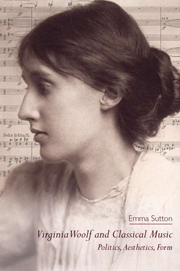Introduction
Published online by Cambridge University Press: 05 April 2014
Summary
In 1918, Roger Fry decorated a small keyboard instrument made the previous year by the great instrument-maker and exponent of early music, Arnold Dolmetsch. The spinet, now in the Courtauld Gallery, London, embodies an eclectic mix of stylistic elements and wider social, political and aesthetic associations. Its closed lid displays abstract shapes suggestive of the Salon Cubism of Gleizes and Metzinger (Fig. 1). Amid the rectilinear shapes a circle, resembling the soundhole of a stringed instrument, contains parallel lines that apparently represent the location of the spinet's strings – a motif familiar from innovative works including Picasso's Guitar and Braque's Woman with a Guitar (both 1913). Where a historical spinet's strings would be placed at c. 30° to the keyboard, however, the painted strings of this instrument are depicted at a larger angle and thus are a further anti-mimetic if not strictly abstract detail. Several of the geometric shapes are painted in the scumbled marbling characteristic of Fry's decorative work (and indeed that of Bloomsbury more widely); the technique evokes the modernity and spontaneity of Post-Impressionist aesthetics but also more traditional decorative styles, the latter connotation augmented by the soft colours of the decorative scheme as a whole.
When a player or viewer lifts the lid, however, the abstract but superficially innocuous design of the upper case is replaced with a startling figurative image of a female nude (Fig. 2).
- Type
- Chapter
- Information
- Virginia Woolf and Classical MusicPolitics, Aesthetics, Form, pp. 1 - 24Publisher: Edinburgh University PressPrint publication year: 2013

